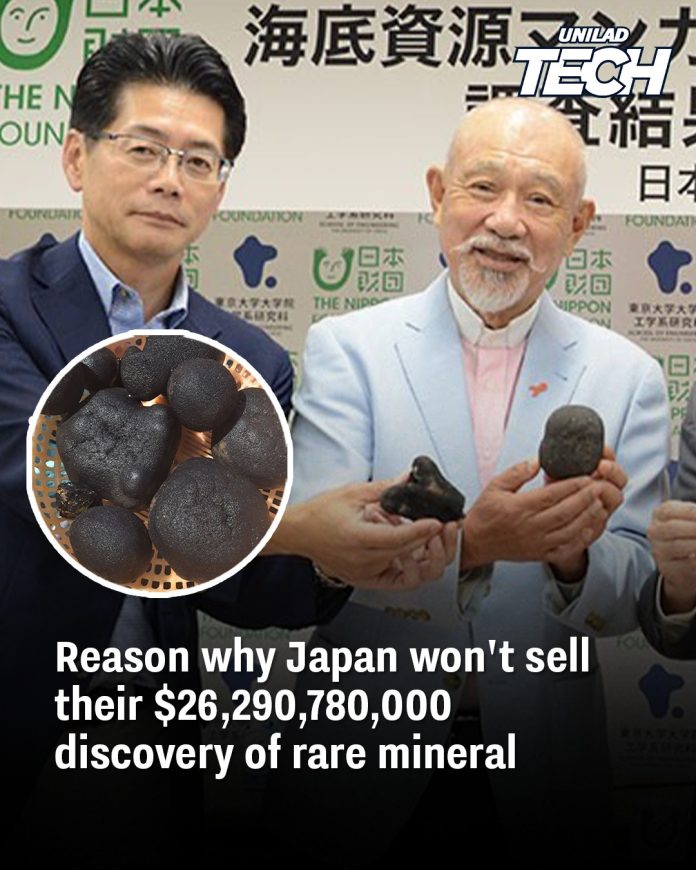In a groundbreaking development, Japanese researchers have uncovered a vast deposit of rare earth minerals on the seabed near Minami-Tori-shima, an island located approximately 1,200 miles southeast of Tokyo. This discovery, estimated to be worth around $26.3 billion, holds significant implications for Japan’s economy and its position in the global technology supply chain.

The deposit comprises approximately 230 million tons of manganese nodules, which are rich in valuable metals such as cobalt and nickel. These metals are essential components in the manufacturing of electric vehicle (EV) batteries, smartphones, and various other high-tech devices. Specifically, the deposit contains an estimated 610,000 metric tons of cobalt and 740,000 metric tons of nickel. At current market prices, this translates to a combined value exceeding $26 billion.
Despite the potential economic windfall, Japan has announced that it will not be selling these resources on the international market. Instead, the country plans to retain and utilize the minerals domestically to bolster its own industries. This strategic decision aims to reduce Japan’s reliance on imported rare earth elements, particularly from China, which currently dominates the global supply.
The extraction process is set to commence by the end of March 2026, with plans to harvest up to three million tons of nodules annually. The Nippon Foundation, in collaboration with the University of Tokyo, is leading the initiative, employing advanced underwater vehicles to collect the nodules from depths of approximately 5,700 meters. The collected materials will then be processed by Japanese companies equipped with the necessary technology to refine them into usable raw materials.

This move is part of Japan’s broader strategy to establish a self-sufficient supply chain for critical materials, thereby enhancing its economic security and technological independence. By developing domestic sources of essential minerals, Japan aims to mitigate the risks associated with global supply disruptions and geopolitical tensions.
Furthermore, the discovery aligns with global trends emphasizing the importance of securing access to rare earth elements, which are vital for the transition to renewable energy and the advancement of green technologies. As demand for EVs and renewable energy solutions continues to rise, the significance of such mineral deposits is expected to grow correspondingly.
In conclusion, Japan’s decision to retain and utilize its newly discovered rare earth mineral deposit underscores a strategic shift towards self-reliance in critical resources. This approach not only strengthens the nation’s economic resilience but also positions it as a key player in the global transition to sustainable technologies.

















